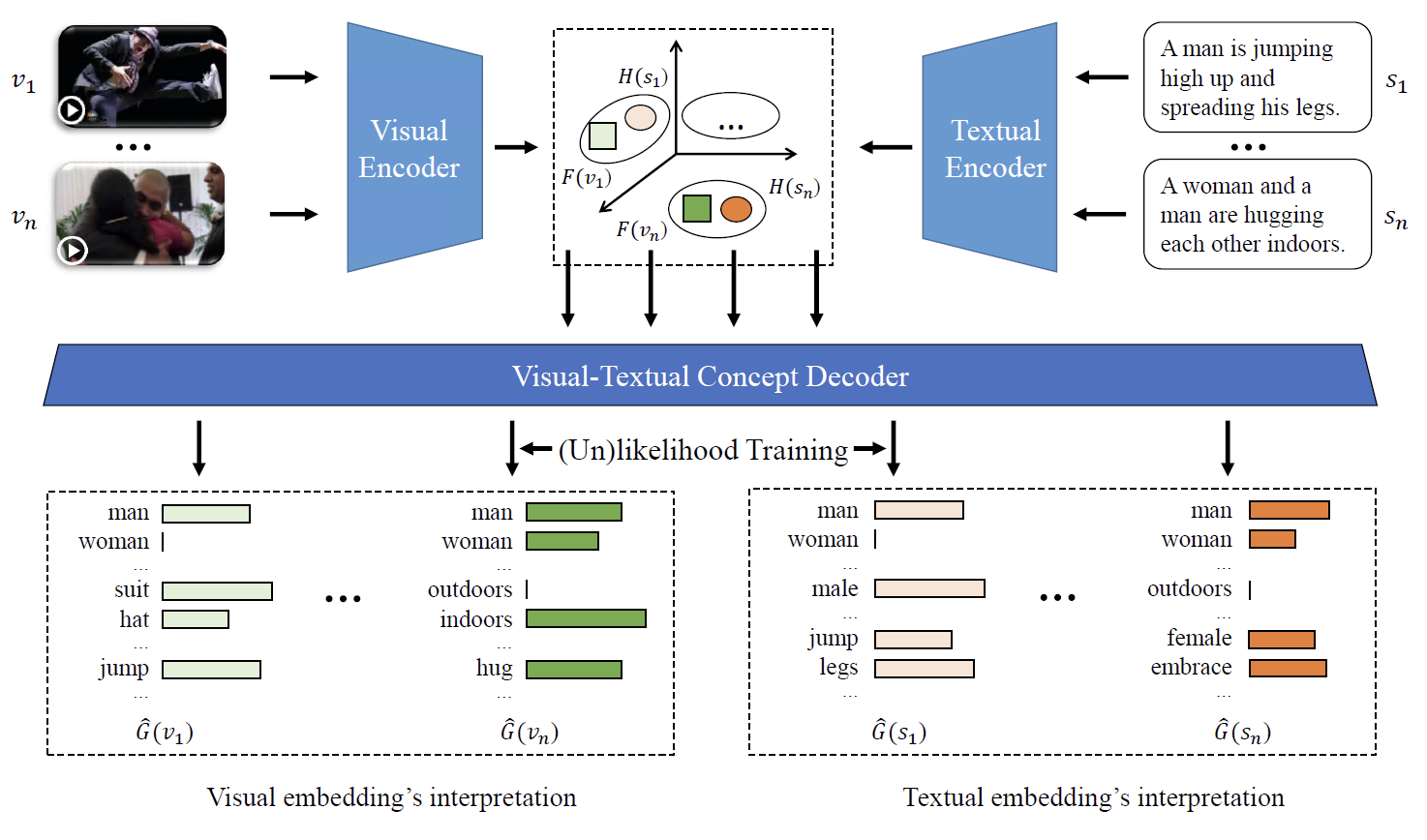(Un)likelihood Training for Interpretable Embedding
Cross-modal representation learning has become a new normal for bridging the semantic gap between text and visual data. Learning modality agnostic representations in a continuous latent space, however, is often treated as a black-box data-driven training process. It is well-known that the effectiveness of representation learning depends heavily on the quality and scale of training data. For video representation learning, having a complete set of labels that annotate the full spectrum of video content for training is highly difficult if not impossible. These issues, black-box training and dataset bias, make representation learning practically challenging to be deployed for video understanding due to unexplainable and unpredictable results. In this paper, we propose two novel training objectives, likelihood and unlikelihood functions, to unroll semantics behind embeddings while addressing the label sparsity problem in training. The likelihood training aims to interpret semantics of embeddings beyond training labels, while the unlikelihood training leverages prior knowledge for regularization to ensure semantically coherent interpretation. With both training objectives, a new encoder-decoder network, which learns interpretable cross-modal representation, is proposed for ad-hoc video search. Extensive experiments on TRECVid and MSR-VTT datasets show the proposed network outperforms several state-of-the-art retrieval models with a statistically significant performance margin.
PDF Abstract



 ImageNet
ImageNet
 MSR-VTT
MSR-VTT
 MSVD
MSVD
 VATEX
VATEX